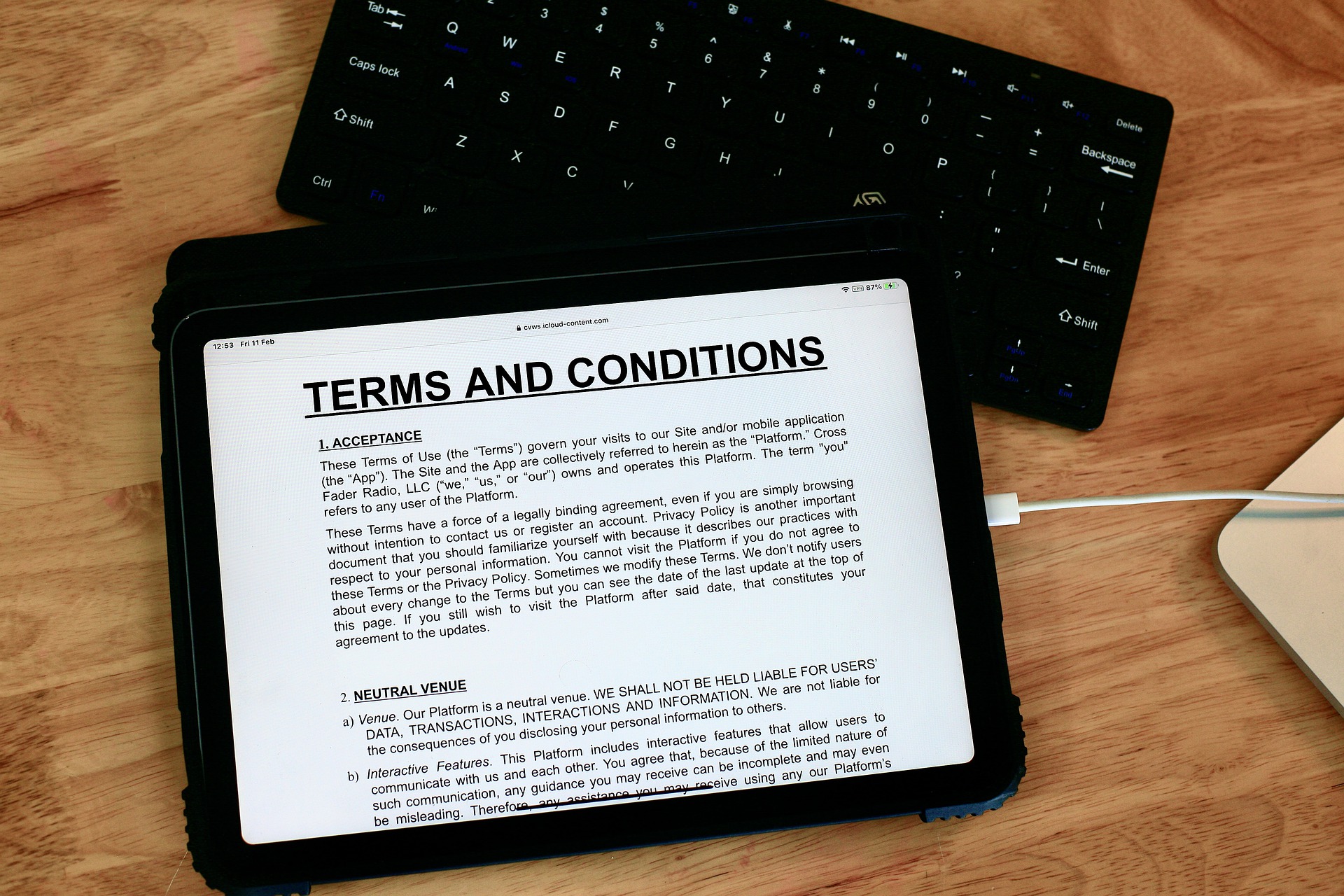Having clear terms and conditions on your website protects your business as well as your customers. Here’s why they’re important.
If you’re a small business operating an eCommerce store or taking payments from your website for the sale of goods or services, then you will benefit from having a terms and conditions page on your website. A well set-out terms and conditions page not only protects you and your business interests, but also helps protect your customers’ rights and increase their confidence in you. Read on to find out more.
What are terms and conditions?
Terms and conditions are like a contract between you and your website’s users regarding things such as:
- How your website is to be used, to prevent abuse
- Specify who owns the content on a website
- Limit your liability for any misinformation on the website
- What payment methods your site offers
- If you’re selling goods, what are the conditions of sale
- If you’re selling products, who the products are suitable for
- If you’re offering a subscription service, what are the conditions of the service
- Any guarantees you want to provide to your customers/clients (for example, if they are not happy with their purchase they can send it back within 30 days to get a full refund)
- How disputes will be resolved
- Any unacceptable uses of the website
- If the website is suitable only for over 18 years
- Acceptable conduct and behaviour on forums
- Any intellectual property rights protected on the website, how they should be used and how they should be credited by anyone who wishes to use the information in it
- Payment types accepted
- Shipping policy
- Privacy policy or how personal information is collected and used (commonly, a privacy policy is separate from the terms and conditions but they can form part of your terms and conditions)
- How disputes will be received and resolved
Is there a difference between terms and conditions?
There’s not really much difference between the two words, however, loosely speaking, terms are what is agreed to before using a site and conditions are what must be followed when using the site. There is also commonly a “Terms of Use” which refer to the rules that apply to every visitor of a website, and “Terms and Conditions”, which specifically apply to a user who pays for a product or service.
What are the benefits of having terms and conditions?
If you sell products and services online, then having a terms and conditions on your website is a must. Terms and conditions are important as they protect your business interest, as well as your customers’ interests. The main benefits are:
1. Prevent abuse
It stops users acting in harmful ways to you and other users of your website (if your website includes user-generated content like posting reviews and comments function). It also puts users on notice that abusive comments and spamming will not be tolerated and their account will be removed if they violate it.
2. Protect your content
You can inform users that unauthorised copying of content is against copyright laws. It also gives guidance on how to properly credit and link to your website if a user wants to use your content.
3. Limit liability
This is important if your business includes giving advice. A limitation of liability clause will alert the user that your content is general only and is not to be relied on as advice. It will also help you avoid customer complaints by setting out what will happen in case there is a dispute and the steps that will be taken when a dispute occurs.
4. Control who can use your website
You get to control the type of people who can use your website. For example, if the website is not suitable for users under 18 years.
5. Compliance
Some jurisdictions require you to state on your website what your privacy policy is, particularly if you’re collecting personal information. You can insert a link to your privacy policy page in your terms and conditions to direct users and inform them how their details will be collected and used.
6. Show you are professional
A terms and conditions page will show your potential customer that you are a professional business. Customers want to see, for example, your refund policy or shipping options before making a purchase. If these are missing then you run the risk of turning them off and turning them away to your competitors.
Are terms and conditions legally binding?
Terms and conditions may be legally binding in Australia if:
- They are displayed prominently on your website, and
- The user has clicked through (or ticked a box) to confirm that they have read and agree to the terms and conditions.
Terms and conditions will not be legally binding if:
- The user is not aware there is a terms and conditions
- They have not performed an action (such as clicking through or ticking a box)
- If the terms and conditions don’t have the basic elements of a contract
- If the terms and conditions have something in it that is too “unfair” and goes against Australian consumer laws.
If you are selling or licensing goods or services that have many complicated components to them, it may be best that you see a lawyer to help you draft an appropriate terms and conditions to govern your sale, to protect you and your customers.
Your terms and conditions need be visible so it is best to put them somewhere where the user can see them regardless of where they go on your website, for example, as links in the footer or the header of a website.
Do I need a terms and conditions on my website?
If you are selling anything online, whether goods or services, where transactions occur online, then the answer is yes. Commonly, these are eCommerce websites and online stores.
If your website is more like an online brochure or a blog then you won’t need terms and conditions.
If you’re operating an eCommerce website or online store and you don’t have a terms and conditions section, you run the risk of breaching Australian Consumer Law if anything goes wrong.
Where can I put a terms and conditions on my website?
It should be some place prominent where a user can easily see it. Ideally, it should be on every page of your website. For this reason, it is commonly put as a link on the header or footer of your webpage so wherever the user clicks on your website, they will see a link to the terms and conditions page.
Can I just copy a template terms and conditions?
There are free, standard terms and conditions templates available online that you can customise for yourself, and most small businesses can benefit from these. However, be careful where you source your templates and make sure that you don’t plagiarise or breach any copyright laws. Also, the free templates online may not be compliant with Australian laws. And as the laws are constantly changing you don’t want to have to constantly re-write your terms and conditions to suit the changing legal landscape.
There are super affordable standard templates that you can purchase, so I recommend doing your research and making sure you’re getting the right one for your business. If you’re in Australia, I recommend starting at the Legal 123 website.
Where can I find out more?
Legal 123 has some great information about writing terms and conditions for your website.
Lawpath has some sample terms and conditions you can view, and you can get your first document free if you sign up with them.
For more information on your rights and responsibilities under Australian Consumer Law, visit the ACCC small business information page.




